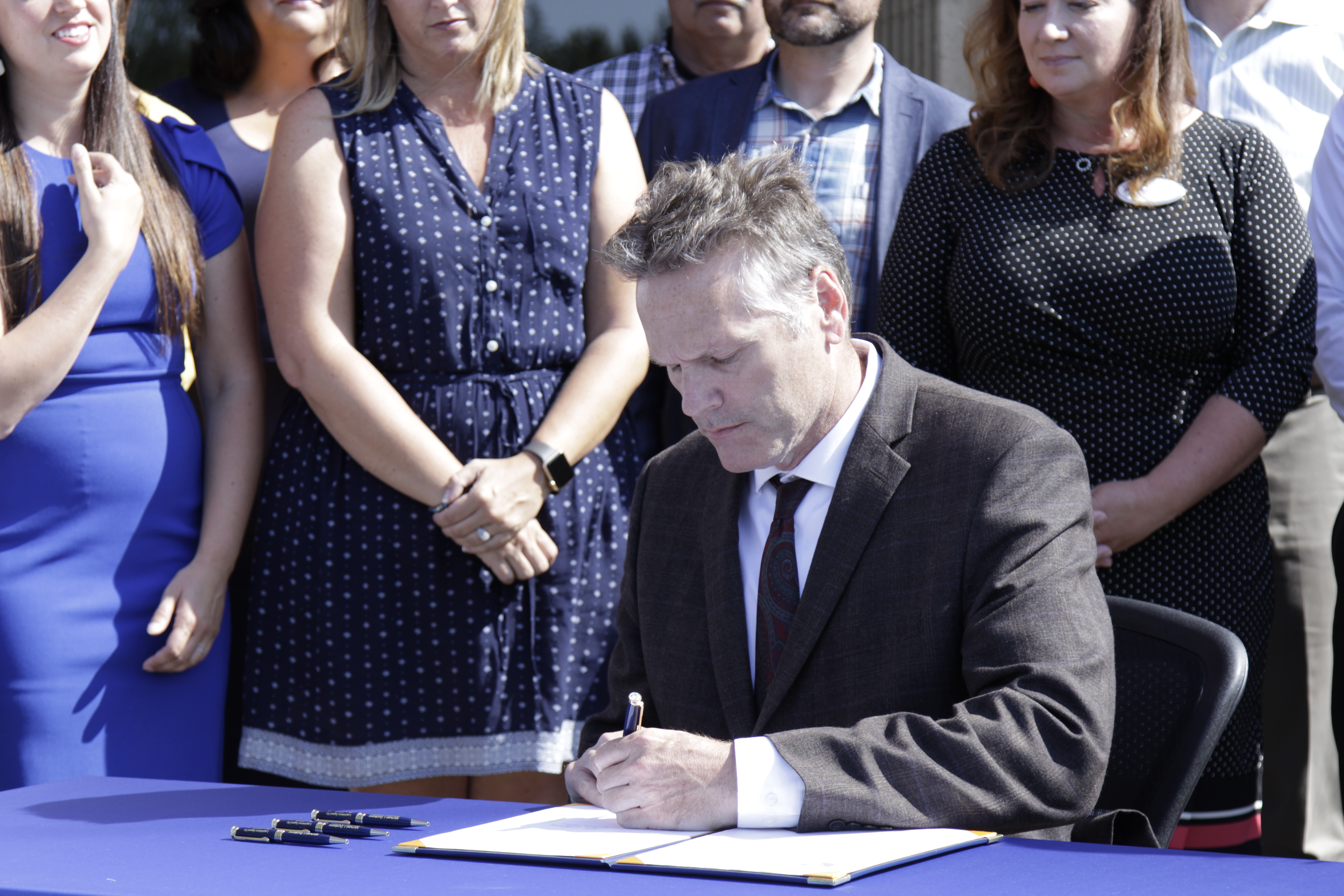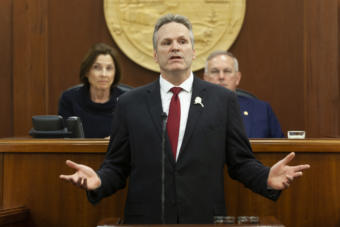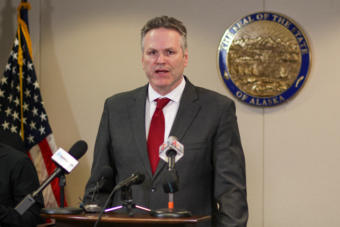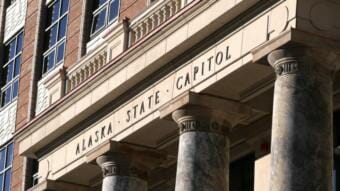
Gov. Mike Dunleavy is getting ready to propose his third budget. His first budget proposed dramatic cuts to state services. The next didn’t include those deep cuts, but it drew down state savings. This time, it’s not clear what his plan is — or exactly when we’ll see it.
The budget could come as soon as Friday. But under state law, Dunleavy must introduce it by Tuesday.
Here are eight things to know ahead of the budget:
- The state’s revenue situation is unclear right now.
The Department of Revenue hasn’t released the annual revenue sources book, which details how much the state expects to bring in taxes, oil royalties and other revenue over the coming year. Oil futures prices, which the Dunleavy administration has used to project prices, have increased since the spring. And the Alaska Permanent Fund has also grown. But the pandemic hasn’t helped state revenue. It’s not clear how all of the changes combined will affect Alaska’s revenue. - The state is still in the red.
The current budget, which lasts through June, was projected in the spring to spend $945.7 million more than the state expected to raise in revenue. But that doesn’t include another $1.34 billion for full permanent fund dividends under the formula in a 1982 state law. - The state has less savings to draw from than in previous years.
The projected deficit for this year is expected to deplete most of the money left in the Constitutional Budget Reserve. That’s the account that the state has used to balance the budget over the past six years. The account has dropped from nearly $18 billion in 2014 to roughly $1 billion today. - “New and interesting” sources of revenue?
While Dunleavy hasn’t said publicly what the details of the budget will be, he said on the conservative Must Read Alaska podcast that the budget would include “some new and interesting” sources of revenue. He also indicated that the budget would include spending reductions, but he didn’t say what size they would be and where they would fall.
Much of the discussion of new revenue over the past six years has focused on whether there would be higher taxes on oil production, or a new broad-based income or sales tax. But Dunleavy hasn’t supported either so far as governor. If the governor doesn’t propose either this year — the amount in new revenue will likely only be a small portion of the deficit. - Public education and Medicaid are the largest items in the state budget.
While Dunleavy proposed large cuts to both areas in early 2019, they have proven politically and practically difficult to reduce. It’s not clear what the governor will propose for both areas this year. - The permanent fund earnings are in the mix.
Another source of potential funding for the budget is the permanent fund earnings, but only if the state is able to draw more than allowed under current state law. Majorities in the Legislature have opposed doing that since the law passed in 2018 to draw roughly 5% of total market value of the fund annually. This amount was used because the Alaska Permanent Fund Corporation said it was sustainable. Drawing more than this amount could threaten the fund’s future growth, according to the corporation and lawmakers. But some legislators who took this position lost in the Republican primary to opponents who emphasized a different law, setting the amount for dividends. - Dunleavy will likely include full dividend funding in the budget.
Dunleavy has been consistent in advocating for a full PFD under the 1982 law. That amount would now be more than $3,000. - Amendments to the state constitution could have long-term budget impacts.
Dunleavy has said he will reintroduce amendments to the state constitution. One would limit state spending growth. Another would require a public vote on any new or increased taxes. Dunleavy also has proposed an amendment that would enshrine the PFD in the constitution.
This story has been edited to correct two typographical errors.



